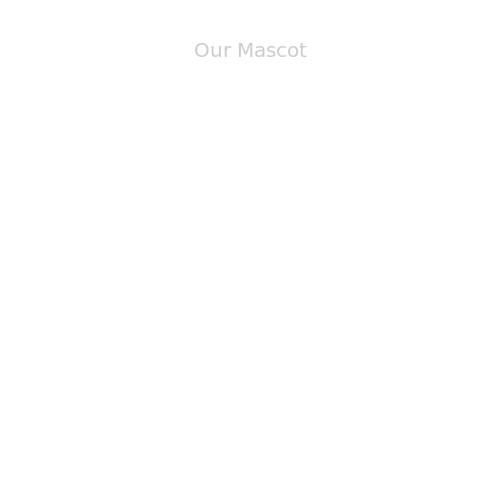Tutorial 5: Do You Know Our Mascot? - Learn About Transitions And Actions!
You have learned a couple of cool features of Javis already. Now you're ready to finally meet our little mascot. Well actually you can't see him just yet - we have to create him first. 😄
Our goal
Let's create a list of what we want first:
- a circular head
- some hair
- eyes
- a nose
- a moving mouth
- he should say something
Learning Outcomes
This tutorial demonstrates the power of actions a bit more than the previous tutorials. An Action can be used to finely manipulate objects in your animation or visualization.
From this tutorial, you will learn how to:
- Finely control objects by making them appear and disappear using an
Action. - Move objects using an
Action. - Learn how to create several objects quickly
Starting with the Basics of Action
The ground function should be familiar to you as well as the general structure of the code if you have seen the first tutorial. In this tutorial, rather than calling the render function in the global space, we are going to be calling it from the function we are creating to create our mascot, face:
using Javis
function ground(args...)
background("white")
sethue("black")
end
function title(args...)
fontsize(20)
text("Our Mascot", Point(0, -200),
valign=:middle, halign=:center)
end
function face()
video = Video(500, 500)
Background(1:150, ground)
the_title = Object(title)
act!(the_title, Action(1:5, appear(:fade)))
render(video; pathname="jarvis.gif", framerate=15)
endNOTE: For an
Objectyou can leave the frames arg blank. The frames from the previous action are used.
A function of an Action is normally either appear or disappear or one of these transformations: anim_translate, anim_rotate/anim_rotate_around and anim_scale.
In theory you can define your own but that is way outside of this tutorial.
Let's summarize the functionality:
We have created a Background as usual and an Object with the same number of frames. The object is saved in a variable the_title such that we can act! on it with an Action. In this case we let the title fade in for the first five frames.
The Upper Part of the Head
Let's continue with a bit more before we draw part of the mascot.
The following actions will be added below the last action.
head = Object(16:150, (args...)->circle(O, 100, :stroke))
act!(head, Action(1:15, appear(:fade)))This is very similar to the previous code. Here we can see that the Action uses relative frame numbers such that the head appears in the frames 16:30 and then is at full opacity afterwards.
NOTE: Just a small refresher: We need the anonymous function
(args...)->circle(O, 100, :stroke)as each function gets called with the three argumentsvideo, action, frame.
Javis Regrows Hair!
Jarvis is bald currently! Okay let's add some hair shall we?
I want to have some randomness in his hair so let's define:
hair_angle = rand(-0.9:0.1:0.9, 20)at the beginning of the face function.
and have a hair function:
function hair_blob(angle)
sethue("brown")
rotate(angle)
circle(Point(0, -100), 20, :fill)
endIt draws one brown hair blob given the angle. We basically rotate the whole canvas and then draw the circle always at the same local position.
Now how do we draw the hair without creating an action for each blob?
Well we actually create an Action for each blob but only internally. You can use the act! function.
hair = Object[]
for i = 1:20
push!(hair, Object(26:150, (args...)->hair_blob(hair_angle[i])))
end
act!(hair, Action(1:25, appear(:fade)))We first create a vector where we define that its a vector of Object and then push new objects to it. Afterwards we can apply an action to the whole group.
I think you get the idea of how to use appear now. Let's add some eyes and a nose quickly before we draw our first gif.
the_eyes = Object(30:150, (args...)->eyes(eye_centers, 10, "darkblue"))
act!(the_eyes, Action(1:15, appear(:fade)))
the_nose = Object(45:150, (args...)->poly(nose, :fill))
act!(the_nose, Action(1:15, appear(:fade)))with:
eye_centers = [Point(-40,-30), Point(40,-30)]
nose = [O, Point(-10,20), Point(10, 20), O]and
function eyes(centers, radius, color)
sethue(color)
circle.(centers, radius, :fill)
setcolor("white")
circle.(centers, radius/5, :fill)
end
Talk to Me, Jarvis
Let's give him some moving lips so he can communicate with us:
upper_lip = [Point(-40, 45), Point(40, 45)]
lower_lip = [Point(-40, 55), Point(40, 55)]These are just the outer points of the lips:
function lip(p1, p2)
setline(2)
move(p1)
c1 = p1 + Point(10, 10)
c2 = p2 + Point(-10, 10)
curve(c1, c2, p2)
do_action(:stroke)
endThis function uses some more functions of the awesome Luxor package.
The lips should be a little thicker than the other lines that we have drawn so far so let's set setline(2) (default is 1). First we move to the starting point of the lip and create two control points a bit below and to the vertical center.
The curve function is used to draw a cubic Bézier curve. It unfortunately doesn't support the :stroke at the end so we have to do this with do_action(:stroke) this time.
Now our two actions:
lip_fade_in = Action(1:15, appear(:fade))
the_upper_lip = Object(60:150, (args...)->lip(upper_lip...))
act!(the_upper_lip, lip_fade_in)
act!(the_upper_lip, [Action(20i:20i+10, anim_translate(0, -5)) for i in 1:5])
act!(the_upper_lip, [Action(20i+10:20i+20, anim_translate(0, 5)) for i in 1:5])
the_lower_lip = Object(60:150, (args...)->lip(lower_lip...))
act!(the_lower_lip, lip_fade_in)
act!(the_lower_lip, [Action(20i:20i+10, anim_translate(0, 5)) for i in 1:5])
act!(the_lower_lip, [Action(20i+10:20i+20, anim_translate(0, -5)) for i in 1:5])We fade them in at the beginning and then they shall move up and down a couple of times.
In this snippet you can see that we can define a more general action which isn't applied to an object at the stage of creation. You can also use the act! function to apply a list of actions to an object like.
Finally let him speak:
function speak(str)
fontsize(15)
text(str, Point(100, 50))
endspeaking1 = Object(80:120, (args...)->speak("I'm Jarvis"))
act!(speaking1, Action(1:5, appear(:draw_text)))
act!(speaking1, Action(36:40, disappear(:draw_text)))
speaking2 = Object(120:150, (args...)->speak("How are you?"))
act!(speaking2, Action(1:5, appear(:draw_text)))
act!(speaking2, Action(36:40, disappear(:draw_text))) This time we also use the disappear function to fade out the text. Additionally, it shows you a new input into appear and disappear which only works for text namely :draw_text which draws the text from left to right.
Now, with everything properly defined within the face function one can simply execute the following from your Julia REPL:
julia> face()To produce the following:

Jarvis is alive!
Conclusion
To recap, by working through this animation you should now:
- Understand how to make objects appear and disappear using actions
- Be able to move objects inside actions to have a finer control of the movement
- Know how to use apply several actions to an object
Hope you had as much fun reading this tutorial as I had creating our mascot.
You're now ready to create your own big project.
The Code
using Javis
function ground(args...)
background("white")
sethue("black")
end
function title(args...)
fontsize(20)
text("Our Mascot", Point(0, -200),
valign=:middle, halign=:center)
end
function hair_blob(angle)
sethue("brown")
rotate(angle)
circle(Point(0, -100), 20, :fill)
end
function eyes(centers, radius, color)
sethue(color)
circle.(centers, radius, :fill)
setcolor("white")
circle.(centers, radius/5, :fill)
end
function lip(p1, p2)
setline(2)
move(p1)
c1 = p1 + Point(10, 10)
c2 = p2 + Point(-10, 10)
curve(c1, c2, p2)
do_action(:stroke)
end
function speak(str)
fontsize(15)
text(str, Point(100, 50))
end
function face()
eye_centers = [Point(-40,-30), Point(40,-30)]
nose = [O, Point(-10,20), Point(10, 20), O]
upper_lip = [Point(-40, 45), Point(40, 45)]
lower_lip = [Point(-40, 55), Point(40, 55)]
hair_angle = rand(-0.9:0.1:0.9, 20)
video = Video(500, 500)
Background(1:150, ground)
the_title = Object(title)
act!(the_title, Action(1:5, appear(:fade)))
a = Object(16:150, (args...)->circle(O, 100, :stroke))
act!(a, Action(1:15, appear(:fade)))
hair = Object[]
for i = 1:20
push!(hair, Object(26:150, (args...)->hair_blob(hair_angle[i])))
end
act!(hair, Action(1:25, appear(:fade)))
the_eyes = Object(30:150, (args...)->eyes(eye_centers, 10, "darkblue"))
act!(the_eyes, Action(1:15, appear(:fade)))
the_nose = Object(45:150, (args...)->poly(nose, :fill))
act!(the_nose, Action(1:15, appear(:fade)))
lip_fade_in = Action(1:15, appear(:fade))
the_upper_lip = Object(60:150, (args...)->lip(upper_lip...))
act!(the_upper_lip, lip_fade_in)
act!(the_upper_lip, [Action(20i:20i+10, anim_translate(0, -5)) for i in 1:5])
act!(the_upper_lip, [Action(20i+10:20i+20, anim_translate(0, 5)) for i in 1:5])
the_lower_lip = Object(60:150, (args...)->lip(lower_lip...))
act!(the_lower_lip, lip_fade_in)
act!(the_lower_lip, [Action(20i:20i+10, anim_translate(0, 5)) for i in 1:5])
act!(the_lower_lip, [Action(20i+10:20i+20, anim_translate(0, -5)) for i in 1:5])
speaking1 = Object(80:120, (args...)->speak("I'm Jarvis"))
act!(speaking1, Action(1:5, appear(:draw_text)))
act!(speaking1, Action(36:40, disappear(:draw_text)))
speaking2 = Object(120:150, (args...)->speak("How are you?"))
act!(speaking2, Action(1:5, appear(:draw_text)))
act!(speaking2, Action(36:40, disappear(:draw_text)))
render(video; pathname="jarvis.gif", framerate=15)
end
face()Author(s): Ole Kröger, Jacob Zelko
Date: August 14th, 2020
Tag(s): jarvis, actions, fade, transformations